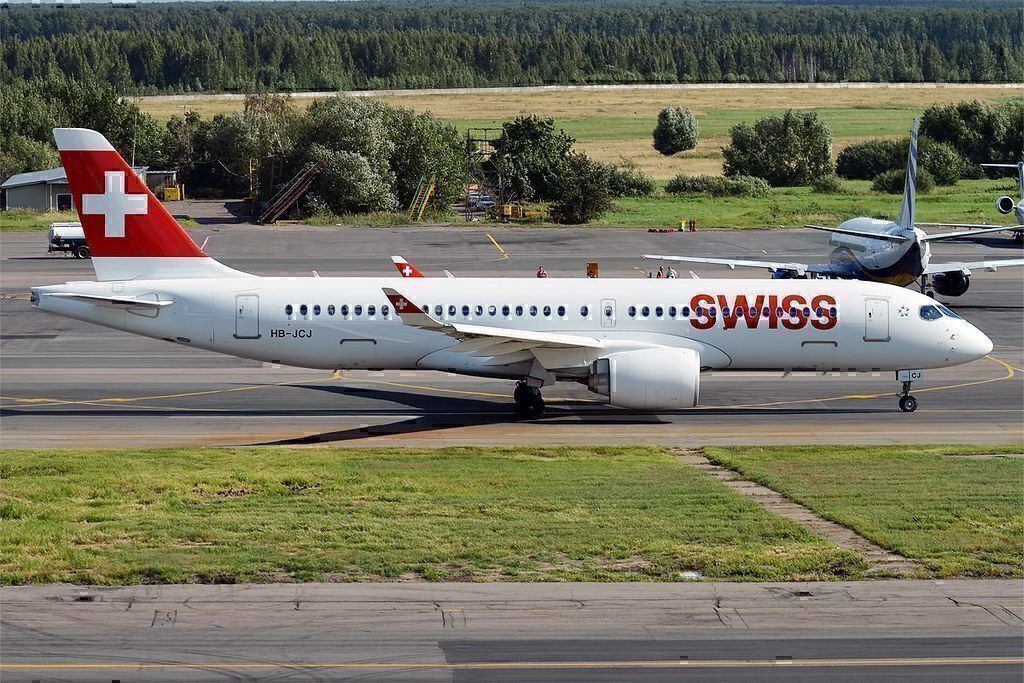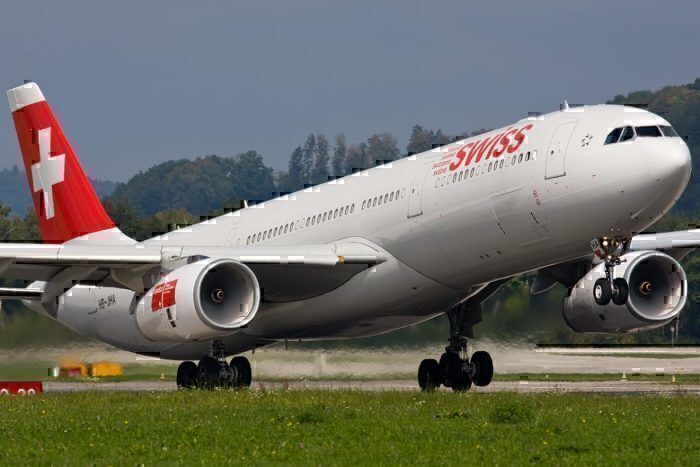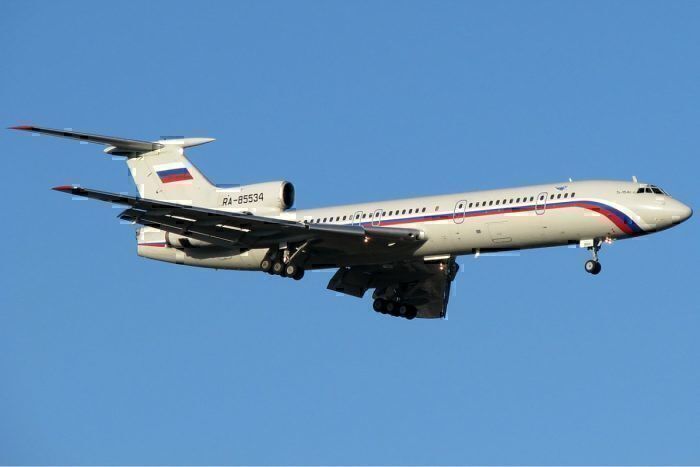Flames were spotted coming from the left-hand engine on a Swiss A220-300 yesterday, Thursday, July 26, 2019, forcing the plane to divert to Paris. The A220 was operating LX348 from Geneva to Heathrow.
The Aviation Herald reports that southeast of Paris and at 32,000 feet a bang was heard and flames were seen coming from the engine. The engine was shut down and the flight diverted to Charles de Gaulle Airport. The A220 landed safely without any injuries to passengers or crew.Swiss have five of the A220-300s which fly routes across Europe. This particular aircraft, HB-JCM, has been with Swiss since June 2018.
In a two-class configuration, the Swiss A220-300 seats 133 passengers. There are 115 passengers in the 2-3 economy class cabin and 18 passengers in the 1-2 business class cabin.
Recent incidents with Swiss
According to Aero Inside, Swiss have had several incidents involving their aircraft over recent months.
On May 13, 2019, an A220-100 was flying from Zurich to Madrid when a bird was sucked into an engine on approach to Madrid. The flight landed safely but the bird strike caused considerable engine damage forcing the return flight to be cancelled.
On June 15, 2019, an A321-200 was operating a flight from Malaga to Zurich. The flight was nearing Zurich and was holding due to bad weather when the aircraft's weather radar failed. The crew called a mayday emergency, later rescinded.
The radar failure was caused by lightning strikes and only lasted two minutes. With active storms around Zurich, the flight diverted to Stuggart where it arrived safely without injuries to passengers or crew. The aircraft eventually reached Zurich several hours late and after inspection resumed its scheduled services the following day.
On July 3, 2019, an A220-300 was ascending out of Zurich en-route to Dusseldorf when the crew noticed "irregularities" with one of the engine valves. The pilots stopped climbing and went into a hold near Zurich before returning safely to the airport.
The following day, July 4, 2019, an A330-300 was operating a long-haul flight from Zurich to Johannesburg. Just south of Genoa an unpleasant and unidentifiable odour was noticed in the cockpit. The odour was strong enough to limit the crew's performance. The A330 turned around and headed back to Zurich where it landed safely.
Swiss has a solid safety record
Swiss is considered an extremely safe airline. Airline Ratings apply objective criteria and give it a 7/7 safety rating. The criteria the airline's safety score is measured against include,
- Is the airline IOSA certified?
- Is the airline on the EU blacklist?
- Is the airline FAA endorsed?
- Does the country of the airline's origin meet ICAO safety parameters?
- Has the airline's fleet ever been grounded by the country's aviation regulators due to safety concerns?
- Is the airline only operating a pre-1990 Soviet-made fleet?
Swiss ticks all the right boxes here to get a perfect score. A perfect seven might seem like a no brainer score for any successful airline but a quick comparison of airline safety ratings sees some airlines with scores as low as two. Apparently, people still get on those flights.
Finally
Incidents involving engine issues are reasonably common. Simple Flying recently reported on a Virgin Australia A330 been forced to return to Melbourne after a trail of vapour was coming from one of its engines as it took off.
The training and professionalism of flight crews mean that just about every time, like the Swiss flight yesterday, the planes gets back on the ground safely and without injury.



